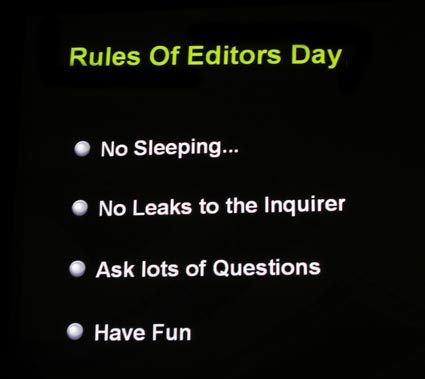ATI and Nvidia's Same-Day Mega-Launch Mayhem
Conclusion
Certainly, it is a buyer's market, and these new cards are just more of what the doctor ordered. Now both the ATI and Nvidia previous generations will allow the majority of purchasers to acquire hardware with even more price point options. The rebuttal from ATI and comments I have heard from card makers suggests that ATI is not willing to lose market share. The prospect of being able to enable CrossFire through the driver and without a dongle may make this attractive for some. However, we would find that all of the previously-sold SLI based motherboards would lead buyers away from a Crossfire solution and to the Nvidia SLI alternative.
Some would like to call the Radeon X1800GTO a paper launch. This may or may not be the case. But until the aforementioned date of the 31st comes and goes with no hardware on shelves, then it will be called a paper launch. This crazy acceleration of hard launches only makes everyone in the industry crazy; including reviewers.
We think that scrambling to launch a counter product is just as insane as giving reviewers less than one week to review three new products in six configurations with a driver that has a revision 1/3 of the way into testing. Then to find out that the driver has an overclocking bug, what good does that do anyone? So the question begs to be asked, what good is a rushed launch? Does it keep rumors from flying across the Web or leaked reviews? Does the consumer benefit any more from a secretive launch with a short time to market or from a preview of things to come with a met delivery date a few weeks later? It seems there is some logic behind the antics but this is a little childish.
We are delighted that there are more cards available on the market and one of them is the 7600GT. It posts solid performance with a nice price. To the credit of Nvidia, they have added cards in at several price points with good performance. Now consumers can find the performance level they wish within tighter pricing bands. You can find a jump every $50 or so from both vendors, putting the purchasing power in the buyers' hands as well as rounding out the companies' margins.
From the many emails with pictures of cards such as the one below, we know this is not a paper launch for Nvidia.
That being said, what card should you buy?
If it is between the Radeon X1800GTO and the GeForce 7600GT, the performance is split. Taking that and the price into consideration, the Nvidia card is $50 less than the proposed ATI solution.
Get Tom's Hardware's best news and in-depth reviews, straight to your inbox.
Both high-end cards have rich feature sets and can support multi-GPUs. The answer comes in the form of if you like hardware acceleration of FP16, SLI, Pure Video or another Nvidia-centric feature, then choose Nvidia. Do you like HDR with AA, CrossFire, or another ATI-centric feature? Then choose the ATI solution.
Right now the answer is in the games you play now and the titles you would like to play in the future. Unfortunately, it will be weeks before we know which cards accommodate which new games the best. We hope to get a better angle on this as the latest crop of new titles during the Game Developer's Conference are released. But when we know what techniques and implementations are being used by the development studios... we will let you know.
Regardless of what the future holds for unreleased titles, the Nvidia GeForce 7900GTX is a force to be reckoned with. Although it won some and lost some, the small size, lower thermal design and performance per watt will make this an attractive desktop solution as well as makes for a very formidable mobile chip. Without breaking any non-disclosure agreements, keep your heads up for more releases from Nvidia.
We are sure this type of photo finish will only add to the discussions in the forums. But before you start hurling graphics cards at each other, please review the rules of editor's day and discuss this topic like civilized technologists, whatever that means.
Current page: Conclusion
Prev Page Frame Rate Tests - F.E.A.R. Continued

